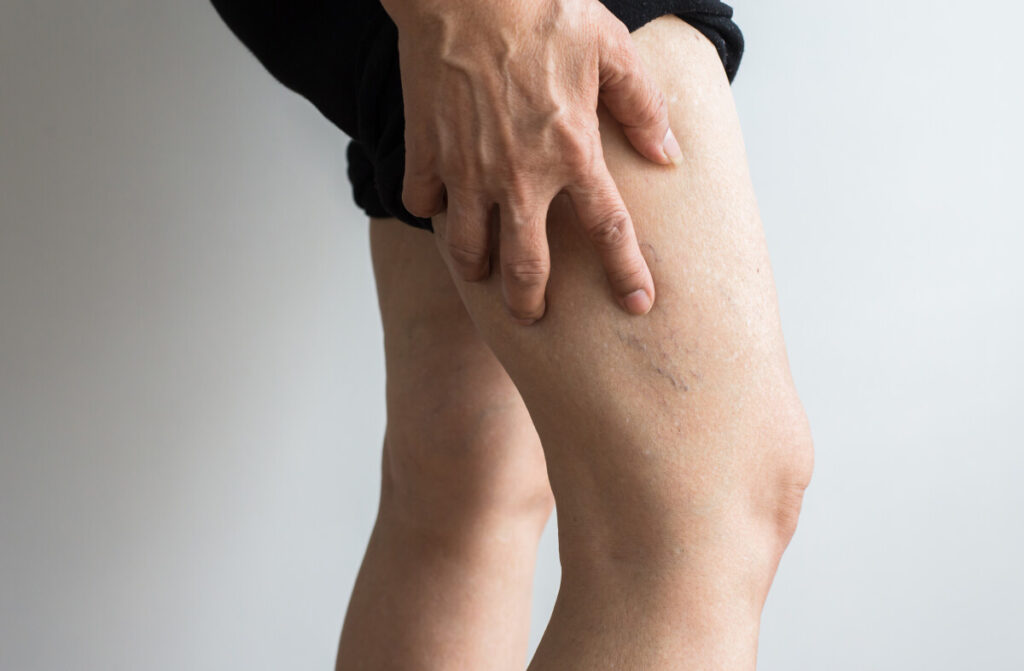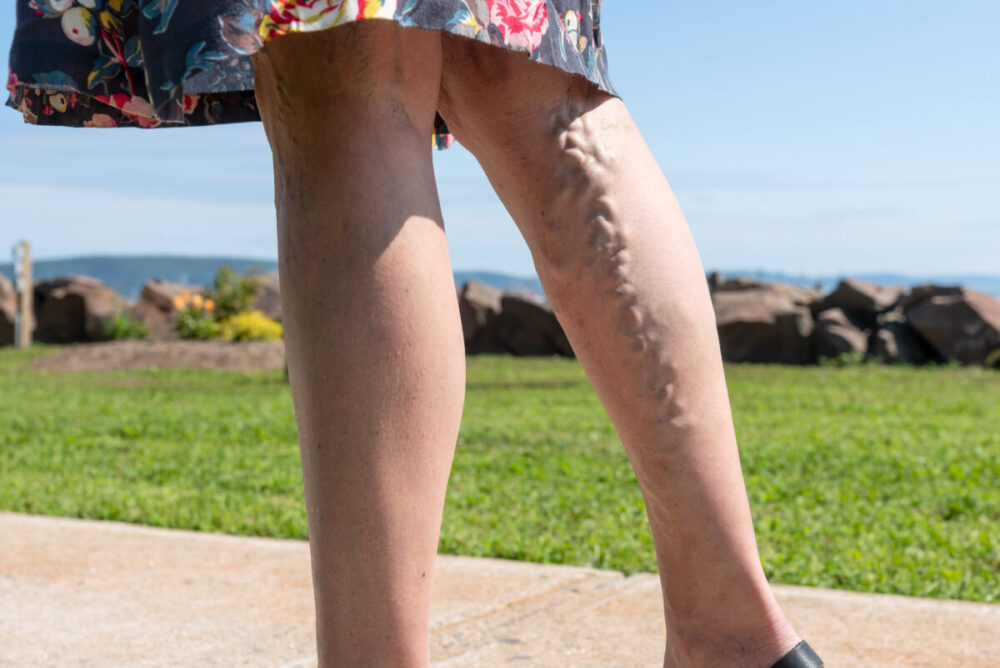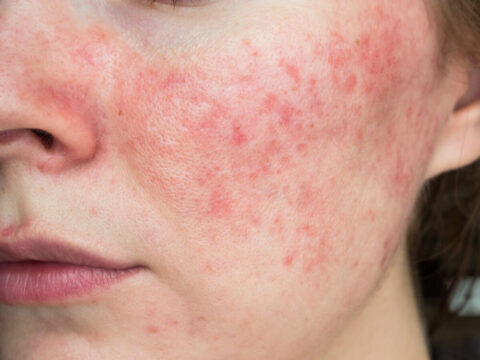Spider and varicose veins are a condition wherein the veins near the surface of the skin become more visible than usual. This is mostly due to inflammation, swelling, and blood clots. Usually characterized by thin purple, blue, or red lines, these veins have a branch-like appearance or spidery look to them, and can appear throughout the body. While a bit intimidating, they’re very common among adults and are usually not a cause for concern. If need be, spider and varicose veins can be easily diagnosed and examined through a physical exam conducted by any healthcare professional.
So what does it mean when you have purple lines all over your body when you exercise? The short answer is, it depends. Purple lines and visible veins across your body that cannot be classified as just spider or varicose veins could be an indicator of many different things. Reasons for purple lines could range from simple extra weight gain and pregnancy to sun damage, or be an indicator of other diseases. When it comes to treatment options for these purple lines whether they be spider veins or not, it’s important to identify the cause to properly address your concerns.
Read More: What’s the Easiest Way to Get Rid of Spider Veins on the Face?
What Causes Purple Lines?
Purple lines on the legs, arms, and other parts of the body don’t just appear out of nowhere. Some of the main causes of the appearance of purple lines include weight gain, pregnancy, sun exposure, and connective tissue disease.
Weight Gain and Stretch Marks
When excessive weight is gained in a short period of time, it’s quite common for stretch marks to appear. Due to weight gain, the connective fibers in your body are placed under too much pressure and are stretched out more than usual. With the skin overstretched, the pressure causes the fibers to break and tear leaving behind what we know as stretch marks.
While often silvery in color, stretch marks that are newly formed often appear to have a red or purple tint on the skin. Red or purple stretch marks might look scary, but this is actually the best time for getting treatments to minimize their appearance. Once stretch marks become silver or white in color, it has been known to be more difficult to treat and minimize their appearance.
Like spider and varicose veins, stretch marks are not harmful in themselves but rather pose as a cosmetic issue rather than a health issue. Whether purple or white, most stretch marks are permanent. While there are a few treatments such as topical creams, peels, exfoliants, and lasers that can help minimize its appearance on the skin, it is best to maintain a healthy weight as there has yet to be a procedure that can completely remove stretch marks from the skin.
Pregnancy and Striae Gravidarum
Similar to stretch marks due to weight gain, pregnancy can cause the skin to stretch at a rapid pace, thus creating purple lines and stretch marks across your body. Medically referred to as striae gravidarum, this is a common condition that affects 90% of women especially after pregnancy. These bodily marks don’t go away on their own even after some time. Although often located on a woman’s stomach, striae gravidarum may appear on the arms, legs, breasts, and buttocks as well.
Striae gravidarum are often genetic as well. This means that getting these visible veins and purple lines during your pregnancy is almost unavoidable especially if you have a family history of having pregnancy stretch marks.
A lot of women struggle with striae gravidarum, and while they can’t be completely prevented, popular options and treatments like over-the-counter creams and gels, as well as weight management, can help minimize their appearance before, during, and after giving birth.
Sun Exposure and Solar Purpura
While tanning is very popular, excessive sun exposure has been shown to cause the appearance of dark purple lines and spider veins on the skin. Some sun exposure is fine and even beneficial but chronic exposure to the harmful UV rays can cause skin discoloration and solar purpura.
With the over-exposure to the sun’s UVA and UVB rays, the skin’s collagen is broken down and damaged to the point of weakening blood vessels and skin tissue, which also affects skin elasticity. With the lack of collagen and weaker tissues, chronic sun exposure can increase the chances of developing purple lines and spider veins on the outer layer of your skin. Though overexposure to the sun may cause discoloration and purple lines across your body, the good thing is that they are most likely temporary. Like a sunburn, the purple lines should fade away after a few weeks and not require any type of surgical treatment to remove them.
Though purple lines and discoloration caused by sun exposure are not permanent, it’s still a good idea to take preventative measures against possible risk factors brought on by sun damage to your skin.
To prevent solar purpura, doctors recommend using an SPF of at least 30 when going out regardless of the weather. This is because UV rays can still penetrate the skin regardless of the sun’s visibility during the day. By doing this, not only do you protect your skin but you also minimize the chances of having visible veins or purple and blue lines across your body.
Connective Tissue Disease
Aside from overstretching the skin and sun damage, it’s possible for spider-like-veins to appear due to a pre-existing medical condition or medical family history. Disorders that affect connective tissues like scleroderma, lupus, and Marfan syndrome are some conditions that can cause purple lines appearing across many parts of the body.
In general, connective tissue disorders cause the collagen and elastin in the connective tissue to be inflamed, thus compromising its integrity. With the weakening of connective tissue, veins can cause blood to pool or rupture resulting in purple lines peeking through the skin surface. When it comes to connective tissue disorders, purple lines and veins are often located on the head, hands, and feet.
These conditions are often passed down from generation to generation, but there are some cases wherein these conditions are formed through habit. While purple lines and varicose veins caused by pre-existing genetic conditions are more difficult to avoid, there are ways to prevent connective tissue diseases and vein issues formed by habit. By avoiding air pollution, smoking, excessive UV exposure, and proper diets, it’s possible to prevent the connective tissue disorders that may be causing the purple and spider-like veins on your skin.
Read More: What Complications Can Occur From Removing Spider Veins?
Seek Professional Diagnosis and Medical Procedures at The Vein Center Doctor

For the majority of people, spider and varicose veins are the first things that may come to mind when seeing spidery purple lines across their bodies. . If you’re not sure, it’s best to consult the professionals and ask for a physical exam to rule out possible reasons behind the purple lines appearing on your skin. If you have concerns regarding spider vein, varicose veins, or similar conditions, it’s important to have it checked as soon as possible, because veins that are overly visible or too pronounced may be indicators of underlying conditions that can worsen over time if not treated.
Here at The Vein Center Doctor, we can help you determine the cause of spider veins and help you maintain the healthy condition of the veins throughout your body. We provide the best care for our patients including invasive treatments like laser therapy and other vein treatments to address your vein concerns. Have any questions? Contact us for a consultation and book an appointment with us today.







